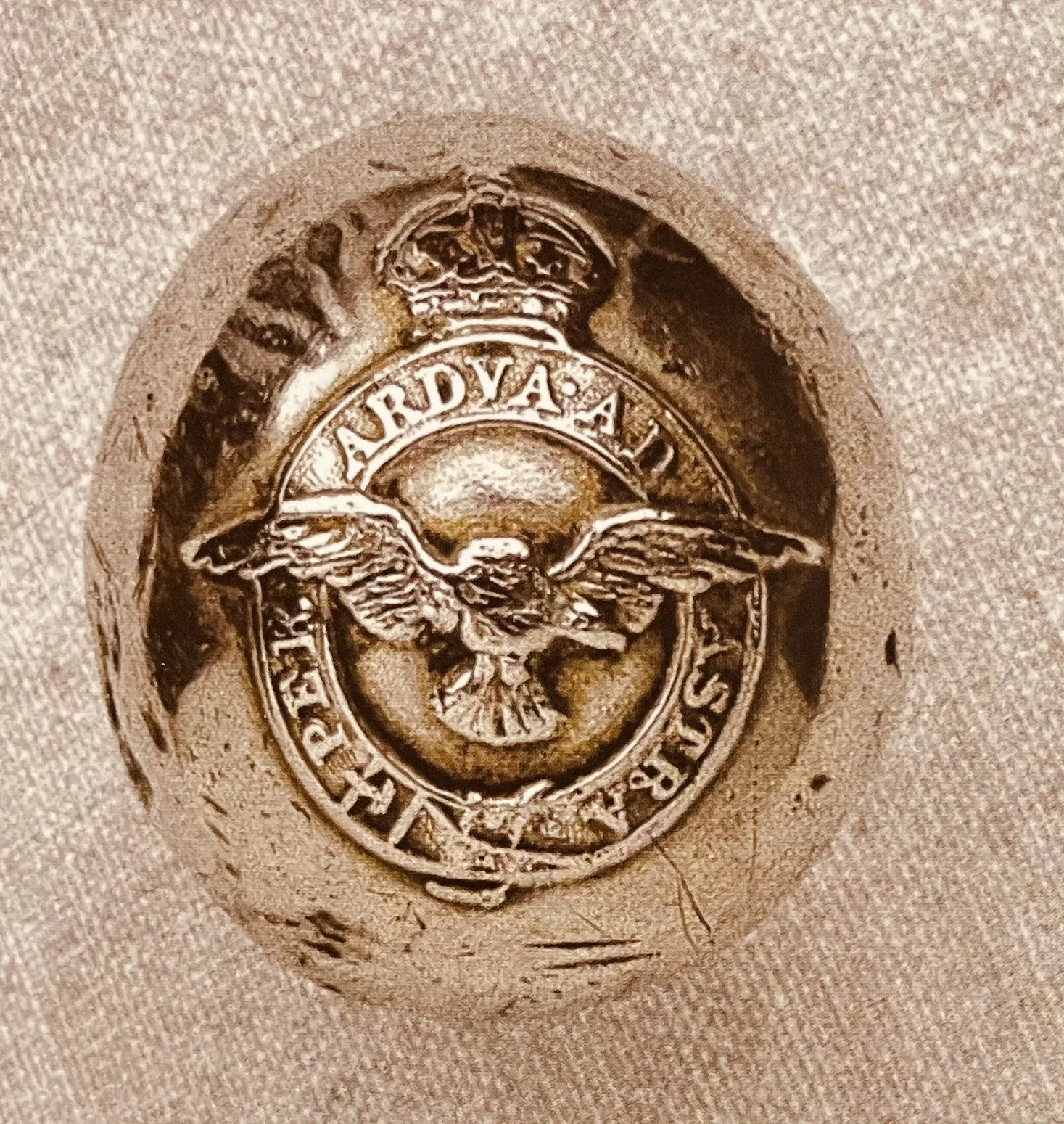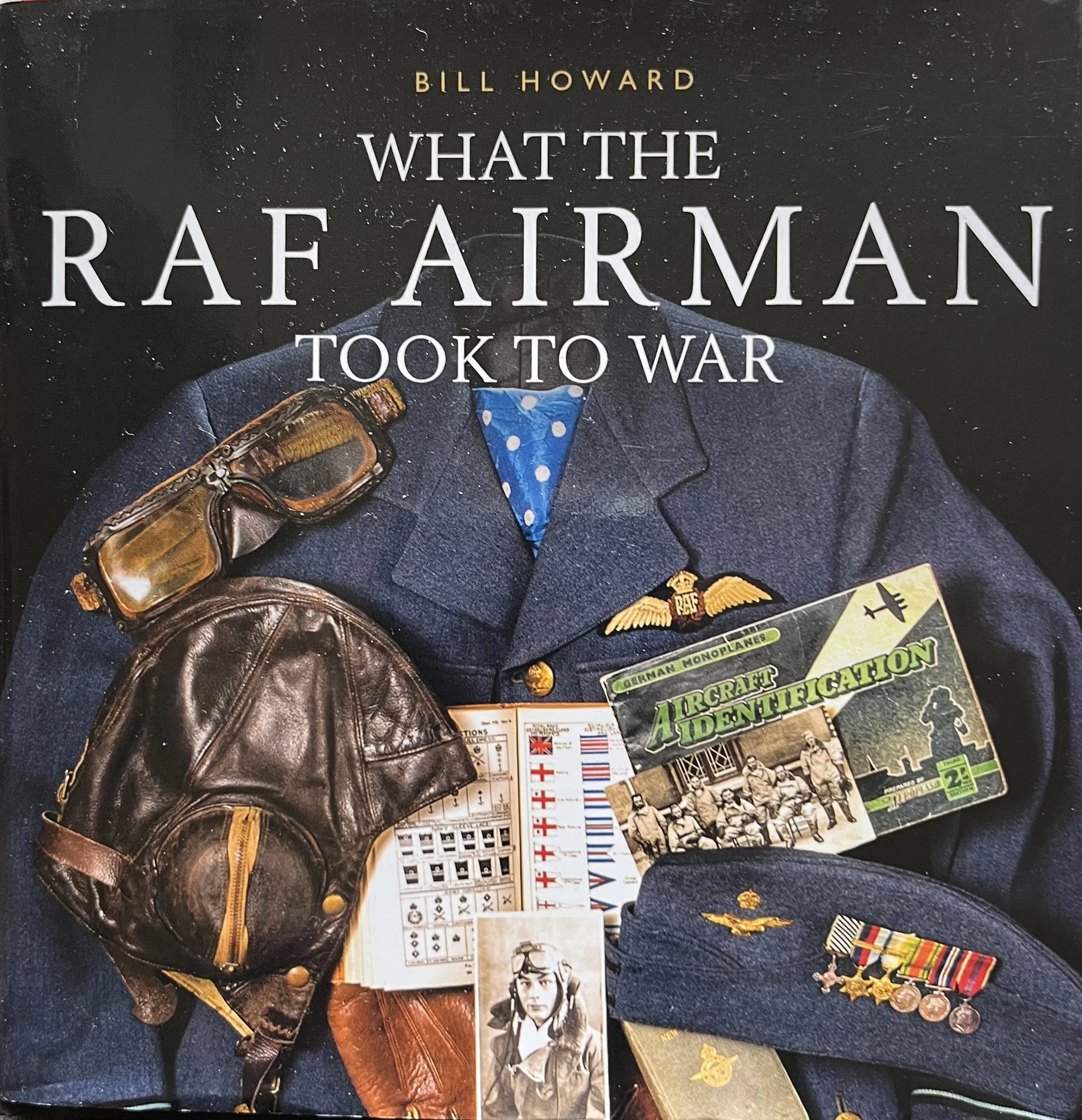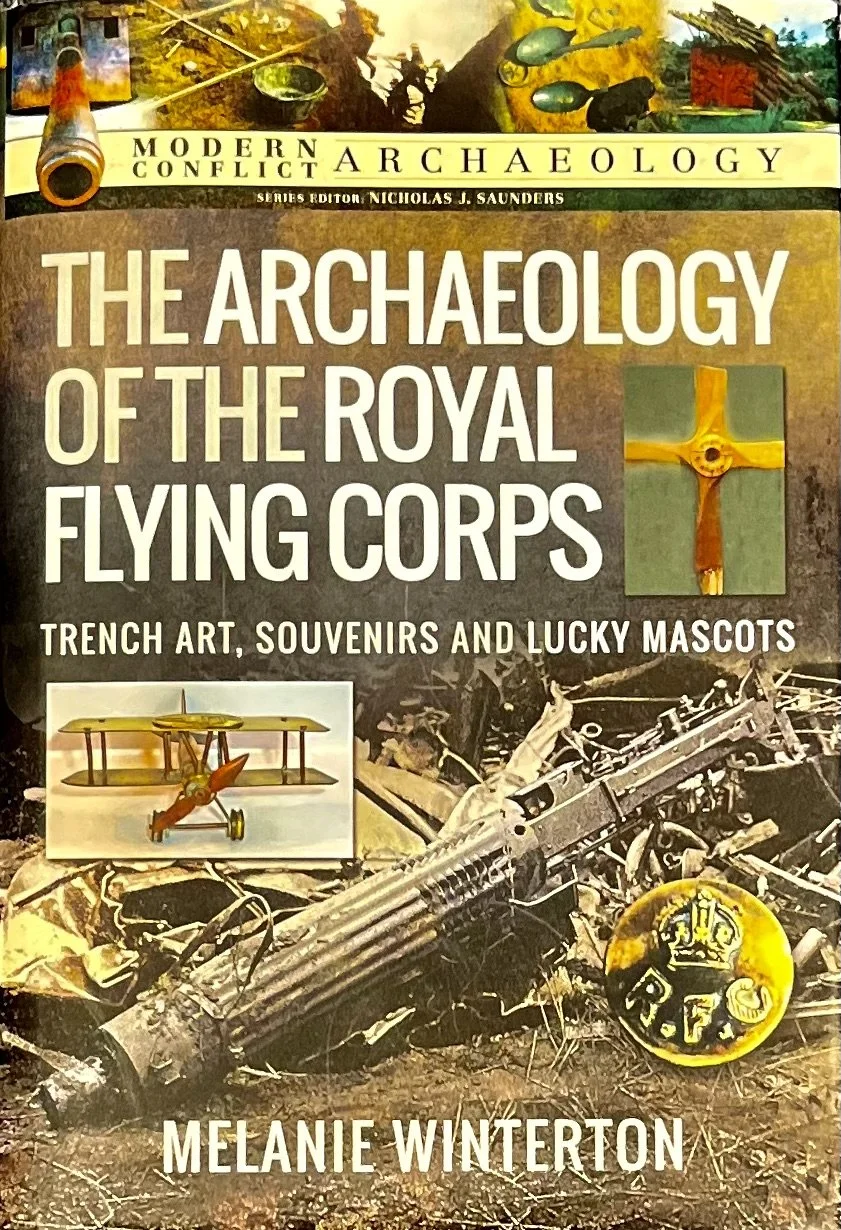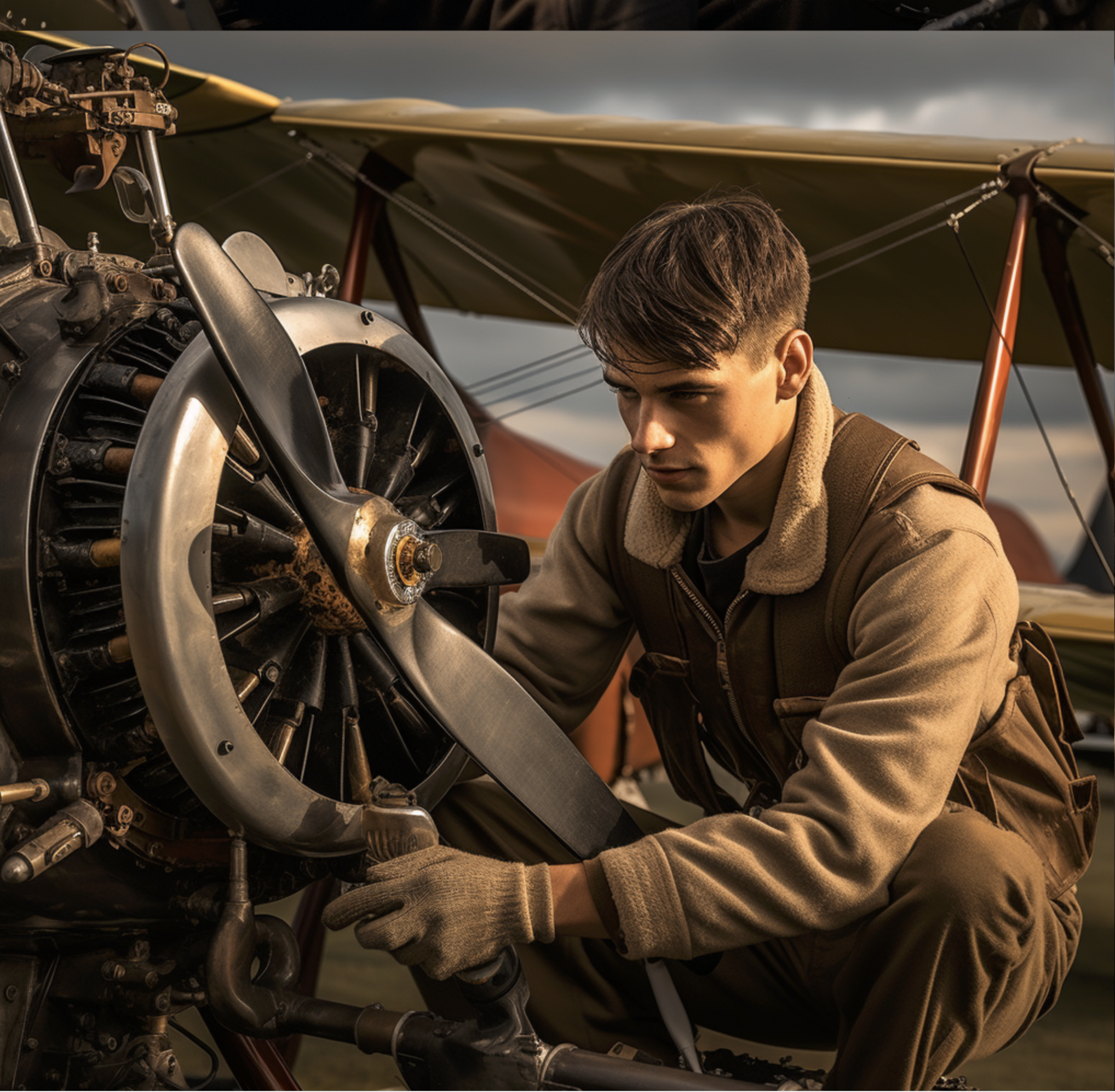RAF PER ARDUA AD ASTRA ~ Through Adversity to the Stars

Royal Air Force
Royal Flying Corps
Through Adversity to the Stars
The Motto of the Royal Air Force is Per Ardua Ad Astra[i].
Adopted on its formation on one April 1918, it is important not only because it means to us all ~ remember, but we also still live in a wonderful country, notwithstanding current political woes, that is free and democratic. The extremes to right and left will never cease in trying to convince the silent majority of the opposite.
Per Ardua Ad Astra
Through Adversity to the Stars
A relief of the image of an RAF tunic buttonby courtesy of Bill Howard in his superb work What the RAF AIRMAN Took to War published by Shire Publications 2015
But the motto is in fact inherited, passed on by its parent when its child flew the nest.
The Royal Flying Corps, the air branch of the British Army, was formed on 13 April 1912. Its first commanding officer, Colonel Frederick Sykes issued an instruction to his officers to find a motto for the Air Branch. Two junior flying officers, one day were discussing this when one commented of a Latin inscription that had impressed him when reading H Ryder Haggard's book “The People of the Mist” where the author places the inscription on gates leading to an estate in Africa. This would be in the colonial era.
They obtained their commanding officer’s approval, and who promptly dispatched his recommendation to formally adpot it, to the War Office. That is not a rubber stamp job, and on 15 March 1913 the Royal Flying Corps motto Per Ardua Ad Astra ~ “Through Adversity to the Stars” ~ was approved by the king, King George V. The formal rendition is of course better and is unique to the Royal Air Force.
How extraordinary that this motto has been a central tenet of my life since I can remember, and which formed the platform for my Cadet Service (1968-1974) with the RAF’s Air Training Corps (now the RAF Air Cadets) and my commissioned service in the Training Branch of the Royal Air Force Volunteer Reserve (1974-1991).
I end this article with two quotes in The Archaeology of the Royal Flying Corps by Melanie Winterton.
“The material world shapes and transforms us ... it shapes our sensory experiences, our emotional responses, our social organisation... and our understanding of the world? Nicole Boivin, Material Cultures, Material Minds. The Impact of Things on Human Thought, Society, and Evolution, 181.”
The second observation is made by Sir Walter Raleigh 101 years ago.
“To see [a pilot] at his best [you]
would have to accompany him,
through the storm of anti-aircraft guns,
into those fields of air
where every moment brings some new trial
of the quickness of his brain
and the steadiness of his nerve.
He is now in the workshop
where tradition is made,
to be handed down as an heirloom
to the coming generations.”
The air battles of the Great War certainly caught the international public unawares. This new and rapidly evolving sophistication in battle could not have even been imagined in the second Boer War (1899-1902) let alone the First Boar War (1880-1881). If Sir Walter Raleigh could have glimpsed ahead just 18 years, he might have had one of those dread moments that we all experience when we envision what lies ahead, and are literally, momentarily, frozen to the spot and silenced.
END
We do indeed, all of us, in all walks of life, in some way struggle with adversity to the stars.[ii]
24 April 2023
All rights reserved
© Eyes to the Skies 2023
© Kenneth Thomas Webb 2023
[i] In Latin, written as PER ARDVA AD ASTRA
[ii] Based upon What the RAF Airman Took to War by Bill Howard (pp22-23)
A life ‘signed off’…
The Inspiration behind this RAF article.
Seeing the flying helmet and the goggles, it makes my sisters and me even more grateful that the family retained these when they were return to the family in Windsor Street in 1943, when a very young man’s tiny ‘estate’ was wound up and signed off by an Air Ministry clerk dealing with the endless loss of life that is the flip side to Per Ardua Ad Astra. KTW
Bill Howard and his Photographer Michael H. Wagner have produced an ‘eye-opener’, as well as an enormous contribution to what is now officially referred to as modern battlefield archaeology. I can only speak for my family in relation to the two airmen who did not return, but I can put it this way, best … they show me things about my ancestors that figuratively are the missing pieces of the jigsaw puzzle. Thank you Mr Howard, thank you Mr Wagner, and thank you Shire Publications.
L.A.C. Kenneth Ernest Webb 1315766 RAFVR in the cockpit of a Boeing Stearman Kaydett Biplane October 1941 On Craig Field, ALA USA, superimposed upon the beautiful cover design of WHAT THE RAF AIRMAN ROOK TO WAR. Kenneth Thomas Webb
Archaeology
All of us know of artefacts in boxes, cupboards, archive drawers, presentations cabinets, even grandly displayed on a wall.
What Melanie Winterton does is to provide us with the key.
A lifetime’s interest (and service) in the Royal Air Force tended to concentrate my mind through the prism of the RAF. I knew about the Royal Flying Corps, loved the Biggles books as a boy, but they soon gave way to an interest in the Second world War.
Ms Winterton’s approach and her style of writing has given me a new prism, and I suddenly find that the Royal Air Force is very firmly rooted in the Royal Flying Corps.
I will never look at an artefact again in quite the same way.
My thanks to VJO & SO. A gem! KTW
This can also be read on the Aviation website Eyestothskies.uk here its main home.
Ken Webb is a writer and proofreader. His website, kennwebb.com, showcases his work as a writer, blogger and podcaster, resting on his successive careers as a police officer, progressing to a junior lawyer in succession and trusts as a Fellow of the Institute of Legal Executives, a retired officer with the Royal Air Force Volunteer Reserve, and latterly, for three years, the owner and editor of two lifestyle magazines in Liverpool.
He also just handed over a successful two year chairmanship in Gloucestershire with Cheltenham Regency Probus.
Pandemic aside, he spends his time equally between his city, Liverpool, and the county of his birth, Gloucestershire.
In this fast-paced present age, proof-reading is essential. And this skill also occasionally leads to copy-editing writers’ manuscripts for submission to publishers and also student and post graduate dissertations.









